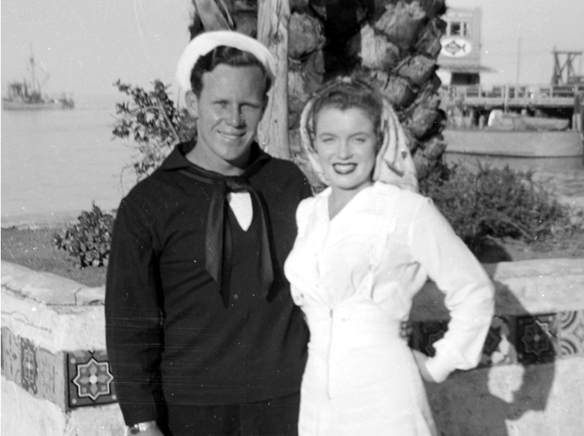
The coronavirus has plunged Catalina Island into a crisis not seen since World War II. Much like today, the island underwent dramatic changes for those who live here, almost overnight. To recall those days, the Catalina Islander is reprinting the series “Fortress Catalina: The Island at War.” This installment originally appeared in the January 20, 2012 issue.
The Catalina Home Front
Within weeks of the attack on Pearl Harbor in 1941, all tourism to the Island came to a halt, exacting a terrible toll on the local economy. While various branches of the military would eventually set up shop on Catalina, thereby helping alleviate the local recession, such relief was still nearly a year away.
Most Islanders left for the mainland and the burgeoning job opportunities in wartime factories. But in the meantime, the few locals that remained during the summer of ’42 had to somehow make a living.
Bill White, author of “Santa Catalina Island Goes to War,” summed up the trials and tribulations faced by locals during that first year of the war: “With the Island being cut off for almost one year…the 900 people who stayed on the Island had to find some way of making a living.”
Lolo Saldana recalls a conversation with Johnny Windle, who at the time was one of the supervisors for the Santa Catalina Island Company: “They had 150 employees in the Island Company office when the war started. This was in December 1941,” said Lolo. “Three days later they had fifteen people.”
Jeanne Hill recalls the hoops one had to jump through just to visit the Island in those days, even as a resident or local property owner. “It was like coming to a foreign country almost. We had to have Coast Guard I.D. passes. It was really exciting because you felt very special.”
Jeanne especially remembers a trip she made on the old S.S. Avalon about the time of the shelling of the Ellwood oil storage facility near Santa Barbara by Japanese submarine I-17. She remembers the guns being “fired up” on the Avalon along with escorts of TBF Avenger dive bombers, a sub-chaser and a mine sweeper. “When I asked the purser about it,” she recalled, “he said ‘not to worry’.” Jeanne was told by the purser that the military was worried “one of the (friendly) mines might have gotten loose from Los Angeles Harbor.”
It wasn’t until after the war that a Navy friend of hers told her the real story; the story of the Ellwood shelling and the various torpedo attacks on local shipping in early 1942—events which had been kept surprisingly secret by the government. In 1947, Jeanne found herself dancing at New York’s St. Regis Hotel when she happened to bump into none other than General Carl Spaatz, then-Chief of Staff of the U.S. Air Force, who expressed surprise even at that late date that Jeanne was familiar with those events from 1942.
“Who told you about that?!,” asked General Spaatz. But Jeanne dutifully protected the identity of her Navy friend.
Nightly blackouts of the entire town of Avalon were the order of the day throughout the war. “In those days,” said Lolo, “everybody everywhere had that black paper around their windows. In case you wanted light, this black paper covered up your windows.”
“Periodically,” said Lolo, “the air raid siren would go off like they had spotted something, a ship or a plane or something. I don’t know if it was just practice or not, but that thing used to go off a lot.”
With very little cash floating around town in those days, Lolo and his ten brothers and sisters chipped in to help the family and their fellow Avalonites with age-old hunting, gathering and farming techniques.
“We ourselves had our own Victory garden. Many people had Victory gardens,” he said. “Many of the locals who were here in those days and even after the war survived by the fact that you could go out and get meat. You could survive on Catalina Island by fishing and by getting wild meat and by fruit around the Island. There were fig trees, orange trees, almond trees—just about any tree you wanted.”
But the Islanders wouldn’t be alone for long. At the invitation of Philip K. Wrigley, four different branches of the military settled into island life with their own training and operational bases: the Coast Guard, the Maritime Service, the Army Signal Corps and the mysterious Office of Strategic Services, the precursor to today’s CIA.
Next Week: Catalina Joins the War Effort









